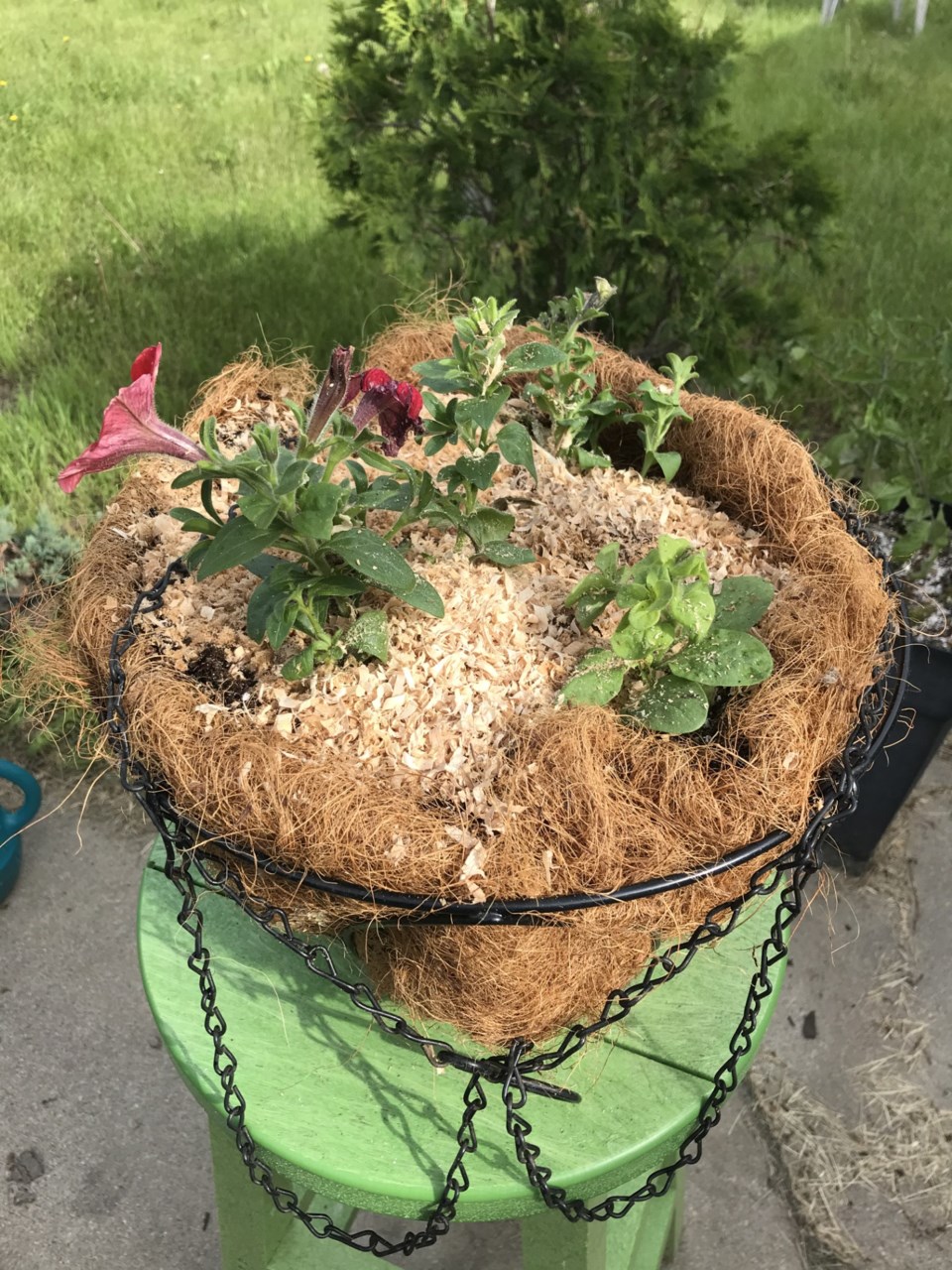A successful garden with annual flowers, herbs and vegetables requires regular water during the growing season. Saskatchewan rainfall can vary immensely from one growing season to the next and even from one week to the next. So far, the 2024 growing season has turned out to provide ample rainfall in most areas however, that can change. Despite the ample rainfall, the Saskatchewan climate is typically dry and we should always look for ways to conserve moisture when we are gardening.
Growing flowers and vegetables in pots can be a special challenge. Pots, raised garden boxes and hanging baskets dry out quickly on a sunny, warm day. Be sure to choose pots that are large enough for your plant when it is fully grown: a five-gallon pot is appropriate for 1 full grown tomato plant or one cabbage plant whereas a 6” diameter pot that is 6” deep can be used to grow 6-8 full grown nantes type carrots. When choosing potting mix for your container or raised garden bed, consider purchasing soil mixes that contain water-absorbing polymers added to the mix. These polymers hold more than their weight in water and release up to 95 per cent of that water to the plant when needed. As far as we know, these polymers are safe to use when growing vegetables for eating.
If the container or garden boxes are made of materials other than plastic, consider lining the container or garden box with a layer of plastic to hold in moisture. Be sure to punch several holes in the bottom of the box or container to allow excess water to drain out. A trick for holding moisture in hanging baskets is to place a baby diaper or a ‘Soil Moist Mat’ at the base of the basket before adding the soil. These mats (or the diaper) will absorb extra moisture and release that excess moisture, when needed, to the plant.
If keeping up with your watering in pots has been a challenge, consider placing a five to 10 centimetre layer of organic mulch (like post peelings) on the surface of the pot or planting box, around the plants. This layer of mulch will prevent moisture at the surface of the potting mix or soil from evaporating during hot, dry weather.
Organic mulch also works well in the garden. Post peelings, wood chips, straw or even grass clippings (that have not been treated with a herbicide) can be placed between rows in the garden, around trees, perennials or annuals in your favourite flower bed. Not only does the organic mulch help conserve moisture but a layer of organic mulch 15-20cm thick will reduce weed germination. Furthermore, the weeds that do germinate will have weaker root systems, making them much easier to pull out. Speaking of weeds, be sure to keep your garden weed-free since weeds use valuable moisture and nutrients that should be available for your flowers or vegetables.
When you do set up the sprinkler for the garden, make the most of the water that you are sprinkling on the garden. Early in the morning is the best time for watering: it is usually cooler and there is less wind so very little water is lost to evaporation in the air. The second best time to water is in the evening. However, I am always cautious about evening watering as it can encourage disease. Wet leaves during an extended period of cool temperatures and darkness are excellent conditions for plant disease development.
Instead of using an overhead sprinkler, consider conserving water by using drip tape. Drip tape is a thin-walled flexible tube that lays along the ground right next to the plants. Emitters are spaced along the tube at various intervals (6”, 10”, 12” and 14” spacings are available). Each emitter releases water at a set rate. Various rates are available but the rates are relatively slow compared to a soaker hose. This slow release of water ensures that the water seeps down below the surface of the soil to the root zone where the plants need it most. Several drip lines can be hooked up to a main supply line. The supply line is usually a PVC pipe. Check with your local gardening centre for supplies. For more information on how to set up a drip tape system, https://homesteadandchill.com/install-drip-irrigation-raised-beds/ provides some excellent details.
Of course, any rain that does fall should be collected and stored in rain barrels. There is nothing like rainwater to grow luscious, healthy plants. If your garden area is close enough to your house, you can even have your eavestrough drain directly into your moisture-loving plants. Although we seem to have been blessed with ample rain so far this season, that is not the norm. Prepare for the warmer, sunny days of summer and reduce your water bill by conserving water.
This column is provided courtesy of the Saskatchewan Perennial Society (SPS; [email protected]). Check our website (www.saskperennial.ca) or Facebook page (www.facebook.com/saskperennial) for a list of upcoming gardening events.



